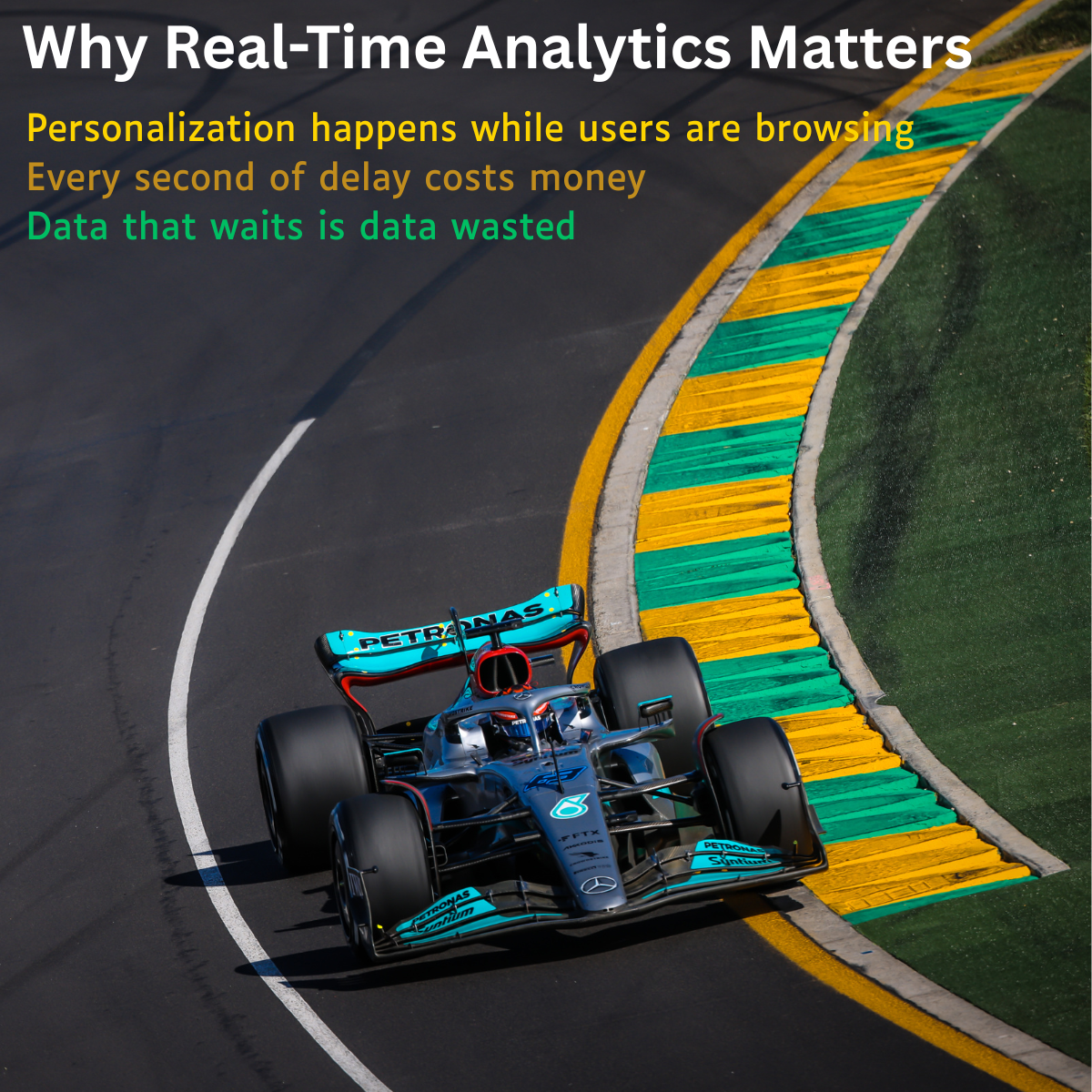Posted At: Aug 04, 2025 - 272 Views

In today's data-driven world, businesses are generating and consuming information at an unprecedented rate. But in many industries, having data isn’t enough, you need it now. That’s where real-time analyticscomes in. It’s no longer just a luxury; it’s a competitive necessity.
From detecting fraud as it happens to personalizing online experiences instantly, real-time analytics enables organizations to act on insights as events unfold—not hours or days later.
⏱ What is Real-Time Analytics?
Real-time analytics refers to the process of analyzing data as soon as it becomes available, with minimal latency. This can mean seconds or even milliseconds, depending on the application.
Unlike traditional analytics, which works with historical data, real-time analytics is dynamic, continuous, and reactive—it empowers decision-making in the moment.
⚙️ How It Works
Real-time analytics typically involves a combination of:
- Data ingestion tools(like Apache Kafka, Amazon Kinesis)
- Stream processing engines(Apache Flink, Apache Storm, Spark Streaming)
- Databases optimized for speed(Redis, ClickHouse, Rockset)
- Visualization dashboards(Power BI, Tableau with real-time extensions)
Together, these tools create a data pipeline that moves from source to insight instantly.
💡 Why Speed Matters
1. Faster Decision-Making
In industries like finance, e-commerce, and manufacturing, real-time data can mean the difference between profit and loss. Imagine a stock trading system that responds to market changes in milliseconds versus one that takes 10 minutes.
2. Improved Customer Experiences
Real-time personalization, like showing the right product, offer, or message based on user behavior can boost engagement and conversions significantly. Think Netflix recommendations or Amazon product suggestions that adjust as you browse.
3. Operational Efficiency
Detecting anomalies in supply chains, production lines, or IT infrastructure as they happen allows for proactive fixes before small issues turn into big problems.
4. Enhanced Security
Real-time analytics is crucial in identifying cybersecurity threats and financial fraud. For instance, banks can freeze suspicious transactions the moment they detect unusual activity.
5. Competitive Advantage
Speed is a differentiator. The faster you can act on insights, the quicker you can innovate, serve customers, and outperform slower competitors.
🔍 Real-World Use Cases
🛍 E-commerce
- Dynamic pricing based on demand and competitor activity
- Real-time cart abandonment notifications
- Instant fraud detection at checkout
🏥 Healthcare
- Monitoring vital signs in ICU
- Real-time diagnostics from wearable devices
- Emergency response coordination using live data
🏦 Finance
- High-frequency trading
- Credit scoring as transactions occur
- Real-time risk modeling
🚚 Logistics & Supply Chain
- Fleet tracking with GPS and traffic data
- Real-time inventory management
- Predictive maintenance for vehicles
🧱 Challenges to Real-Time Analytics
While powerful, implementing real-time analytics isn’t without hurdles:
- Data volume and velocity: Massive data streams require robust infrastructure.
- Latency: Every millisecond counts.
- Data quality: Garbage in, garbage out—errors at speed can be costly.
- Cost: Real-time infrastructure is more expensive than batch processing.
- Integration: Real-time systems must seamlessly tie into CRMs, ERPs, and other core platforms.
🧠 Future of Real-Time Analytics
As edge computing, AI, and 5G become more widespread, real-time analytics will expand beyond enterprise dashboards and into connected devices, smart cities, and autonomous systems.
Imagine a future where retail shelves restock themselves, autonomous vehicles reroute in milliseconds, and factories self-correct before human intervention is needed—all driven by real-time data.
In an age where every second counts, real-time analytics is redefining how businesses operate. Whether you're aiming to enhance user experiences, streamline operations, or outpace competitors, real-time insights can give you the edge.
It’s not just about data. It’s about the rightdata, at the righttime.
